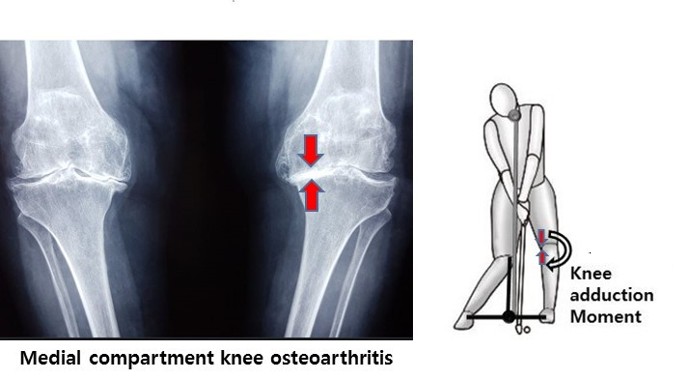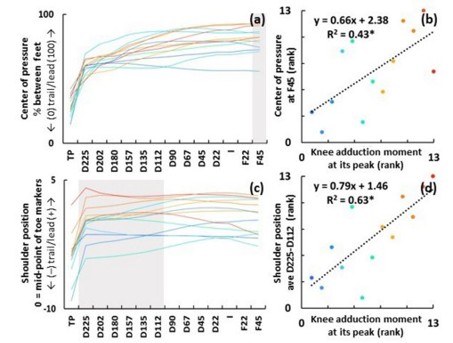THE MECHANICS OF INJURY
Subject-Specific Biomechanical Risk Factors of Knee Injuries in Recreational Golfers
Identified recreational golfers have very different collections and subject-specific risk factors than professionals. This study also suggests that the analytic technique we used, the 1D Statistical Parametric Mapping (SPM) within-subject regression analysis, could be the technique for identifying subject-specific risk factors. Although we must evaluate whether the personalized movement modification designed by SPM analysis reduces joint loading, we plan to start by applying this technique (under review).
Biomechanical Risk Factors of Knee Injuries in Professional Golfers
The knee loadings associated with the risks of knee osteoarthritis (OA) progression and ACL injuries during the golf swing are greater than those experienced during walking. We investigated the biomechanical risk factors contributing to these knee loadings and proposed several postural modifications to reduce the risks.
1. For golfers who have suffered an ACL injury, we recommend positioning the ball closer to the golfer (J Sports Sci Med, 2022) and promoting rapid knee extension during the downswing (Wu Tsai Human Performance Alliance Research Symposium, 2023).
2. For golfers at risk of medial compartment knee OA, placing the ball away from the target (J Sports Sci Med, 2022), a wider stance, minimizing shoulder sway towards the target during the downswing, and reducing weight transfer around impact are suggested (Sci Rep, 2022).
3. For golfers at risk of lateral compartment knee OA, we advise reducing tibial medial tilt (or decreasing the valgus knee angle) at the address (Sci Rep, 2022).
These preventative interventions aim to reduce knee loading not only during walking but also throughout the golf swing, thereby maximizing the lifespan of natural joints.




© 2025 Kim Sung Eun. All rights reserved.
